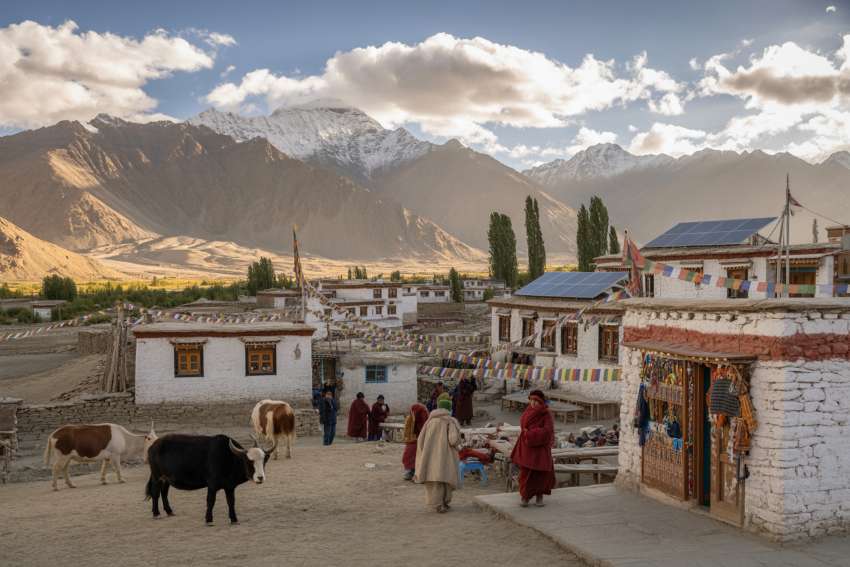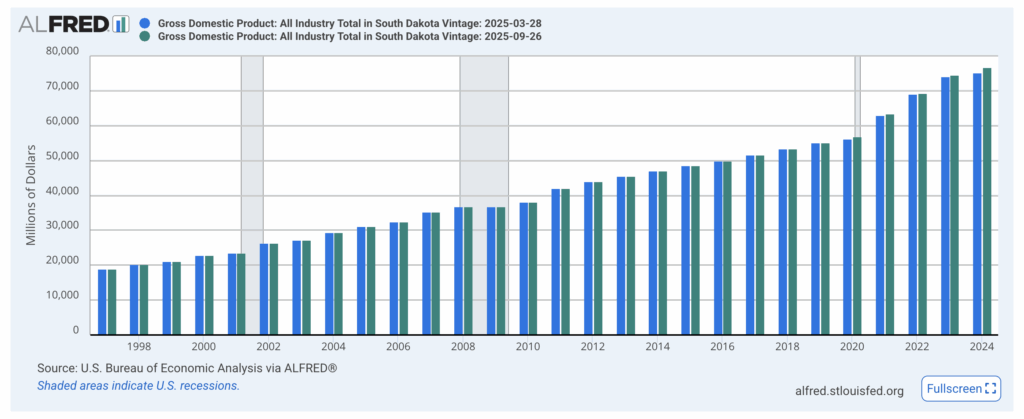Sustainable Tourism in Ladakh, India: How Eco Travel is Reviving Culture and Empowering Mountain Communities – Travel And Tour World

Report on Sustainable Tourism Development in Ladakh and its Alignment with Sustainable Development Goals (SDGs)
Introduction: A Paradigm Shift in Regional Tourism
The tourism landscape in Ladakh has undergone a significant transformation, shifting from a model of commercial mass tourism to one centered on ecological consciousness, community empowerment, and responsible travel. Since gaining Union Territory status in 2019, the local administration has strategically reoriented its tourism policies to prioritize sustainability, cultural preservation, and inclusivity. This report analyzes Ladakh’s approach, highlighting its direct contributions to the United Nations’ Sustainable Development Goals (SDGs) by fostering a tourism model that ensures both conservation and livelihood enhancement.
Policy Framework and Governance for Sustainable Development
The Department of Tourism has established a robust policy framework to guide the region’s transition towards a sustainable tourism model. This framework is built on a high-value, low-impact principle, designed to attract conscientious travelers and ensure long-term ecological and social well-being.
Core Principles and Alignment with SDG 12
The government’s strategy is founded on three core principles that directly support SDG 12 (Responsible Consumption and Production):
- Economic benefit for local communities.
- Conservation of natural and cultural heritage.
- Promotion of visitor awareness and responsible behaviour.
The Ladakh Tourism Vision Document further outlines the goal of establishing Ladakh as a global benchmark for responsible tourism, with strict regulations implemented for construction and development in ecologically sensitive areas.
Strategic Initiatives and Partnerships (SDG 17)
To achieve its objectives, the administration has engaged in multi-level collaborations, reflecting SDG 17 (Partnerships for the Goals):
- Partnerships with national schemes such as the Swadesh Darshan Scheme and the Vibrant Village Programme to link tourism with rural development.
- Organisation of workshops to train local youth in ecotourism practices, waste management, and visitor engagement, ensuring a people-centric development model.
Socio-Economic Empowerment and Inclusive Growth
A key outcome of Ladakh’s sustainable tourism strategy has been the direct economic empowerment of its mountain communities, with a focus on inclusivity and equitable benefit sharing.
Advancing SDG 1 (No Poverty) and SDG 10 (Reduced Inequalities)
The rise of community-based homestays has been instrumental in advancing SDG 1 (No Poverty). The Homestay Policy ensures that tourism revenue flows directly to households in remote villages. Furthermore, efforts to expand tourism beyond the traditional hubs of Leh, Pangong Lake, and Nubra Valley to regions like Kargil, Zanskar, and border villages contribute to SDG 10 (Reduced Inequalities) by distributing economic opportunities more widely.
Promoting Gender Equality and Decent Work (SDG 5 & SDG 8)
These initiatives have significantly advanced SDG 5 (Gender Equality) and SDG 8 (Decent Work and Economic Growth) by empowering local populations, particularly women and youth. Key contributions include:
- Women taking active roles in managing homestays and leading cultural tours.
- Youth gaining employment and entrepreneurial opportunities in the tourism sector.
- Promotion of local crafts, such as traditional textiles and metalwork, creating sustainable livelihoods.
Conservation of Natural and Cultural Heritage
Ladakh’s tourism model intrinsically links economic prosperity with the preservation of its unique ecological and cultural assets.
Protecting Life on Land (SDG 15)
Wildlife conservation is a central pillar of the tourism experience, directly supporting SDG 15 (Life on Land). Community-based conservation programs have transformed local attitudes towards wildlife, such as the snow leopard. By creating economic incentives through wildlife tourism, local communities have become protectors of the region’s biodiversity, demonstrating a successful model of human-wildlife coexistence.
Fostering Sustainable Communities and Preserving Culture (SDG 11)
The strategy actively preserves local heritage, contributing to SDG 11 (Sustainable Cities and Communities). This is achieved through:
- Integrating Balti and Ladakhi crafts, traditional architecture, and Buddhist heritage into tourism experiences.
- Supporting craft cooperatives to ensure the continuation of indigenous art forms for future generations.
Environmental Management and Climate Action
While progress has been significant, Ladakh faces environmental challenges inherent to its fragile ecosystem. The administration has implemented targeted measures to mitigate these risks.
Addressing Environmental Challenges (SDG 12 & SDG 13)
To address issues like water scarcity, waste, and carbon emissions, the following sustainable measures are being promoted, aligning with SDG 12 and SDG 13 (Climate Action):
- Assessing the carrying capacity of popular tourist sites to prevent overuse.
- Promoting renewable energy systems, such as solar facilities, to reduce dependency on fossil fuels.
- Establishing waste-segregation centers in key tourist hubs.
- Encouraging visitors to adopt sustainable practices, including avoiding single-use plastics and respecting local customs.
Conclusion: A Model for Responsible and Sustainable Travel
Ladakh’s journey towards sustainable tourism serves as a compelling model for other ecologically vulnerable regions. By embedding the principles of the Sustainable Development Goals into its policy and practice, Ladakh has demonstrated that tourism can be a powerful force for positive change. The emphasis on community involvement, minimal environmental impact, and authentic cultural exchange has reshaped its tourism identity. The region’s clear vision—that tourism must benefit both people and the planet—positions it as a leader in creating a future where preservation and prosperity coexist.
Analysis of Sustainable Development Goals in the Article
1. Which SDGs are addressed or connected to the issues highlighted in the article?
The article on sustainable tourism in Ladakh addresses several Sustainable Development Goals (SDGs) by highlighting a multi-faceted approach that integrates economic growth, social empowerment, and environmental protection. The following SDGs are directly connected to the initiatives described:
- SDG 1: No Poverty: The article emphasizes creating economic opportunities for local communities, especially in remote villages, through tourism income.
- SDG 5: Gender Equality: It specifically mentions the empowerment of women who are actively participating in and benefiting from the tourism economy.
- SDG 7: Affordable and Clean Energy: The text points to the promotion and use of renewable energy, such as solar facilities, to reduce dependency on fossil fuels.
- SDG 8: Decent Work and Economic Growth: The core theme is the development of a sustainable tourism model that creates jobs, supports local entrepreneurship, and ensures economic benefits flow to the local population.
- SDG 11: Sustainable Cities and Communities: The article discusses efforts to preserve cultural and natural heritage, manage waste, and develop sustainable infrastructure.
- SDG 12: Responsible Consumption and Production: It describes the shift from mass tourism to a low-impact model, focusing on sustainable practices, waste reduction, and managing the region’s carrying capacity.
- SDG 15: Life on Land: The article highlights the importance of conserving Ladakh’s delicate ecosystem, including wildlife conservation programs and protecting natural habitats.
2. What specific targets under those SDGs can be identified based on the article’s content?
Based on the article’s content, several specific SDG targets can be identified:
- Target 8.9: “By 2030, devise and implement policies to promote sustainable tourism that creates jobs and promotes local culture and products.” The article directly reflects this target through the government’s policy framework, the “Ladakh Tourism Vision Document,” and the focus on a “high-value, low-impact tourism model” that promotes local culture and benefits communities.
- Target 11.4: “Strengthen efforts to protect and safeguard the world’s cultural and natural heritage.” This is evident in the “strict regulations” for construction near monasteries, the integration of “Balti and Ladakhi crafts, traditional architecture, and Buddhist heritage” into tourism, and the support for craft cooperatives.
- Target 12.b: “Develop and implement tools to monitor sustainable development impacts for sustainable tourism…” The article mentions that the “carrying capacity of famous lakes and trekking routes is being assessed to prevent overuse,” which is a direct method of monitoring tourism’s impact.
- Target 5.5: “Ensure women’s full and effective participation and equal opportunities for leadership…” The article explicitly states that “Women and youth have been particularly empowered” by “managing homestays, crafting traditional textiles, and leading guided tours,” showing their active participation and economic leadership.
- Target 15.5: “Take urgent and significant action to reduce the degradation of natural habitats, halt the loss of biodiversity…” This is addressed through community-based wildlife conservation programs, such as turning the “once-feared snow leopard into a symbol of coexistence,” where locals are incentivized to protect wildlife.
- Target 7.2: “By 2030, increase substantially the share of renewable energy in the global energy mix.” The article mentions that “Renewable energy systems are being promoted to reduce fuel dependency” and “solar facilities” are being built, aligning with this target.
- Target 11.6: “By 2030, reduce the adverse per capita environmental impact of cities, including by paying special attention to… waste management.” This is addressed through the establishment of “waste-segregation centres in key tourist hubs” and encouraging visitors to avoid single-use plastics.
3. Are there any indicators mentioned or implied in the article that can be used to measure progress towards the identified targets?
Yes, the article mentions or implies several indicators that can be used to measure progress:
- For SDG 8 (Decent Work and Economic Growth): The number of community-based homestays established under the Homestay Policy serves as an indicator of local economic participation. The article states that this model ensures “tourism income flows directly to households in remote villages,” implying that the proportion of tourism revenue retained by local communities is a key metric. The number of youth trained in ecotourism practices is another measurable indicator.
- For SDG 11 (Sustainable Cities and Communities): The establishment of “waste-segregation centres” and the implementation of “strict regulations” for construction near heritage sites are tangible indicators of progress in waste management and heritage protection. The number of craft cooperatives supported indicates efforts to preserve cultural heritage.
- For SDG 5 (Gender Equality): The number of women managing homestays, leading tours, or participating in craft cooperatives can be measured to track women’s economic empowerment and participation in the tourism sector.
- For SDG 12 (Responsible Consumption and Production): The development of carrying capacity assessments for tourist sites is a direct indicator of monitoring sustainable tourism. A reduction in single-use plastic waste, encouraged by promoting refillable bottles, could also be measured.
- For SDG 15 (Life on Land): The success of community-based conservation programs can be indicated by stable or increasing snow leopard populations and a reduction in human-wildlife conflict. The enforcement of construction regulations near lakes and wildlife areas is another indicator.
- For SDG 7 (Affordable and Clean Energy): The number of solar facilities installed and the percentage of tourism establishments using renewable energy are clear indicators of progress towards clean energy adoption.
4. Table of SDGs, Targets, and Indicators
| SDGs | Targets | Indicators |
|---|---|---|
| SDG 1: No Poverty | 1.4: Ensure equal rights to economic resources. | Increase in household income in remote villages from tourism; number of self-reliant rural economies created. |
| SDG 5: Gender Equality | 5.5: Ensure women’s full and effective participation and equal opportunities for leadership. | Number of women managing homestays, leading guided tours, and participating in craft cooperatives. |
| SDG 7: Affordable and Clean Energy | 7.2: Increase substantially the share of renewable energy. | Number of solar facilities and other renewable energy systems installed in villages and tourist amenities. |
| SDG 8: Decent Work and Economic Growth | 8.9: Devise and implement policies for sustainable tourism that creates jobs and promotes local culture. | Number of community-based homestays; number of local youth trained in ecotourism; proportion of tourism revenue retained by local communities. |
| SDG 11: Sustainable Cities and Communities | 11.4: Protect and safeguard the world’s cultural and natural heritage. 11.6: Reduce the adverse environmental impact of cities, including waste management. |
Implementation of construction regulations near heritage sites; number of craft cooperatives supported; establishment of waste-segregation centres. |
| SDG 12: Responsible Consumption and Production | 12.b: Develop and implement tools to monitor sustainable development impacts for sustainable tourism. | Completion of carrying capacity assessments for tourist sites; initiatives promoting the reduction of single-use plastics. |
| SDG 15: Life on Land | 15.5: Take action to reduce the degradation of natural habitats and halt biodiversity loss. | Number of community-based wildlife conservation programs; evidence of protection for species like the snow leopard. |
Source: travelandtourworld.com
What is Your Reaction?
 Like
0
Like
0
 Dislike
0
Dislike
0
 Love
0
Love
0
 Funny
0
Funny
0
 Angry
0
Angry
0
 Sad
0
Sad
0
 Wow
0
Wow
0



















































.jpg.webp?itok=0ZsAnae9#)

























